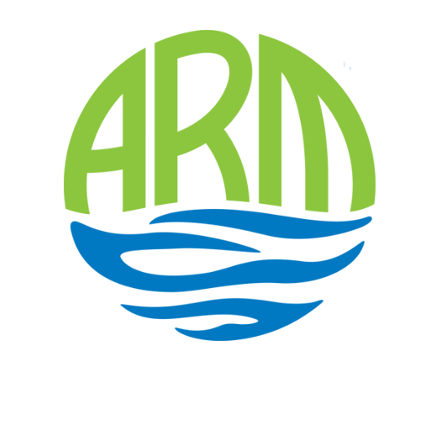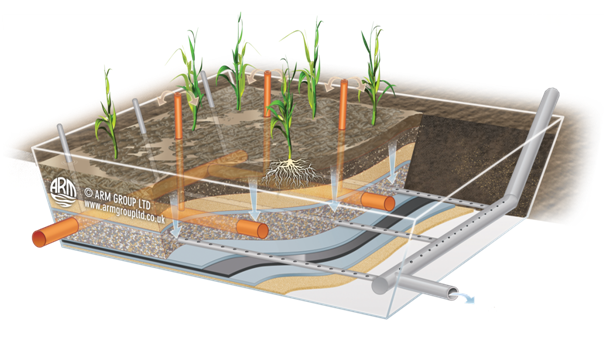Sludge Treatment Reed Beds (STRB) have been used to treat sewage and drinking water sludges. Developed from the planting of reeds into a pre- existing sludge drying beds, they differ from the conventionally constructed reed bed designed for the purpose of wastewater treatment, as the STRB’s basic function is to hold sludge, allowing it to dewater leaving behind a sludge cake.
STRB share many design similarities with Vertical Flow (VF) reed beds in that there is a drainage matrix of graduated media in the base. Above the drainage matrix is a substantial freeboard for the accumulation of sludge sufficient for an operating cycle of approximately 10 years.
Sludge is pumped on to the reed bed basin through a series of distribution pipes and over the previously dewatered sludge. Over time, sludge reduction takes place in reed-planted basins. Due to dewatering (draining and evapotranspiration) the solids content of the sludge remains on the basin surface as sludge residue, whilst the majority of the water content flows vertically through the sludge residue and filter layer.
Drying and mineralisation reduces the liquid sludge volume by as much as 90%, with physical filtration removing almost 100% of the total suspended solids from the STRB effluent. After 10 years of operation, the sludge residue reaches an approximate height of 1.2 – 1.5 metres with a dry solids content of 30-40%.




